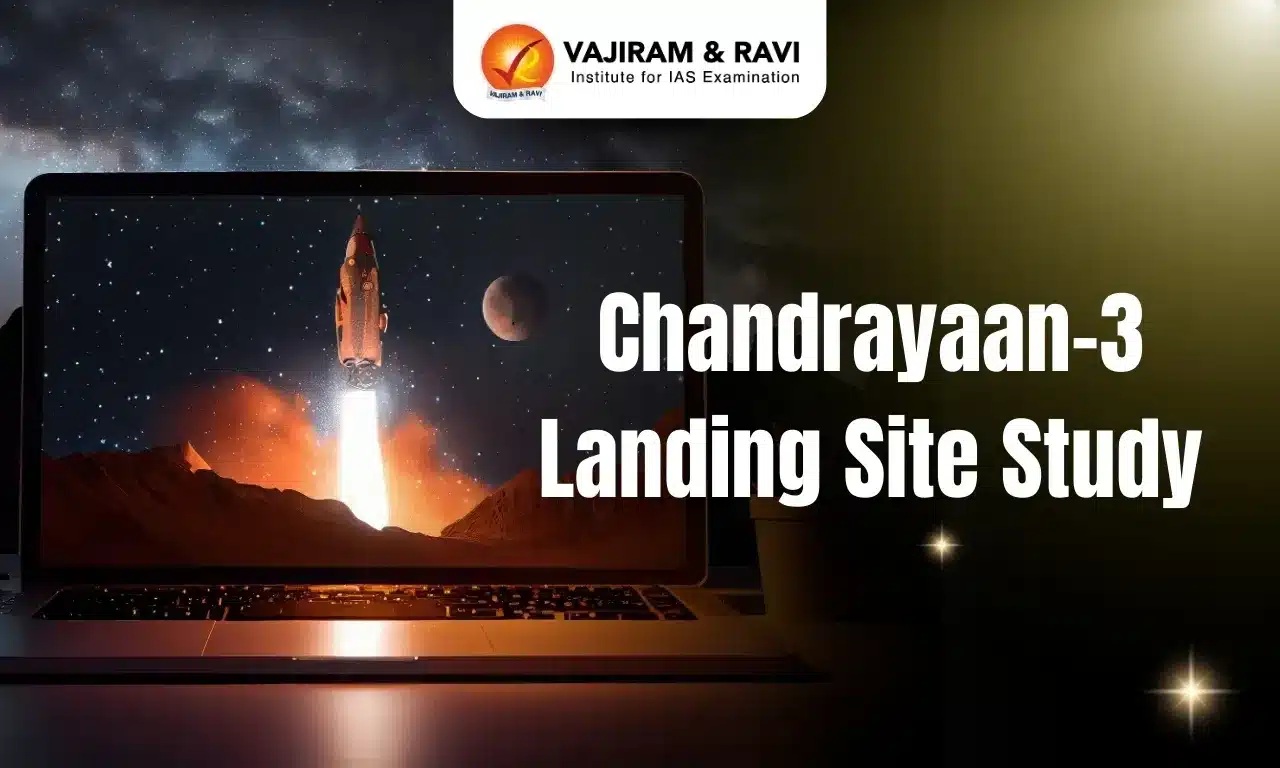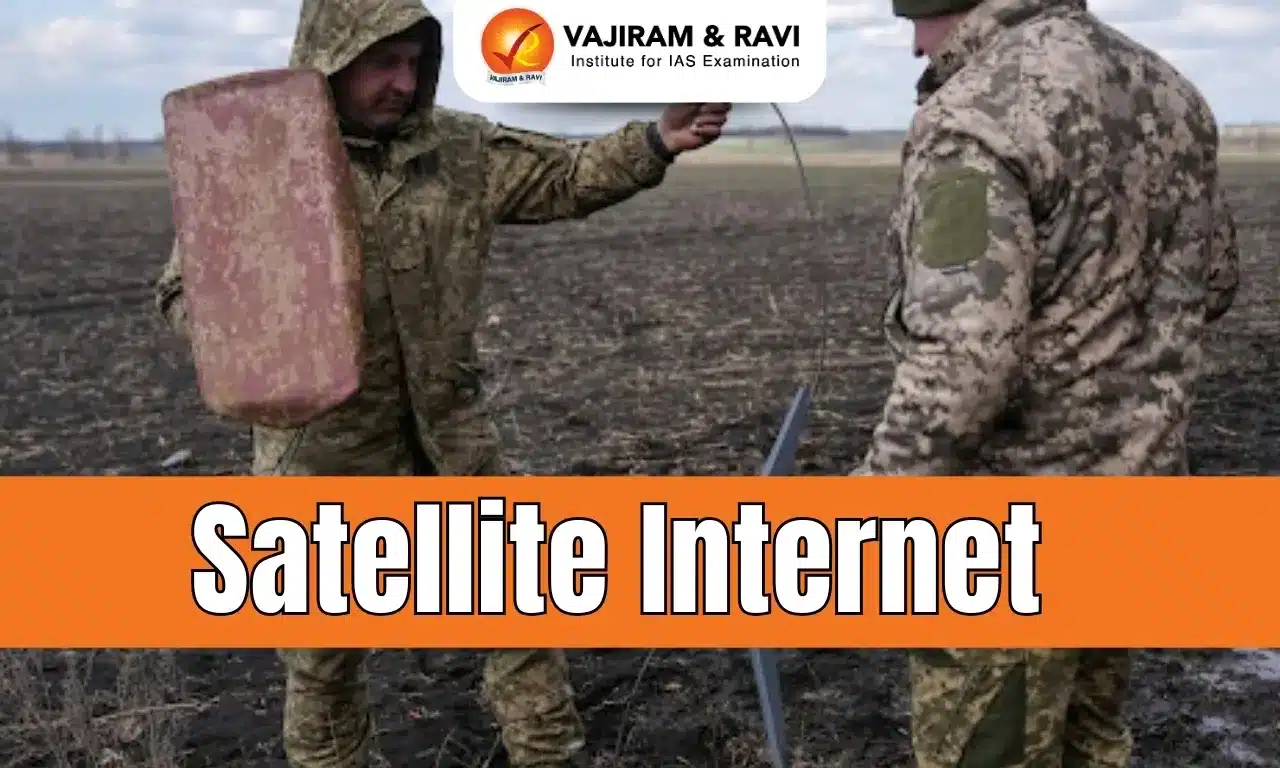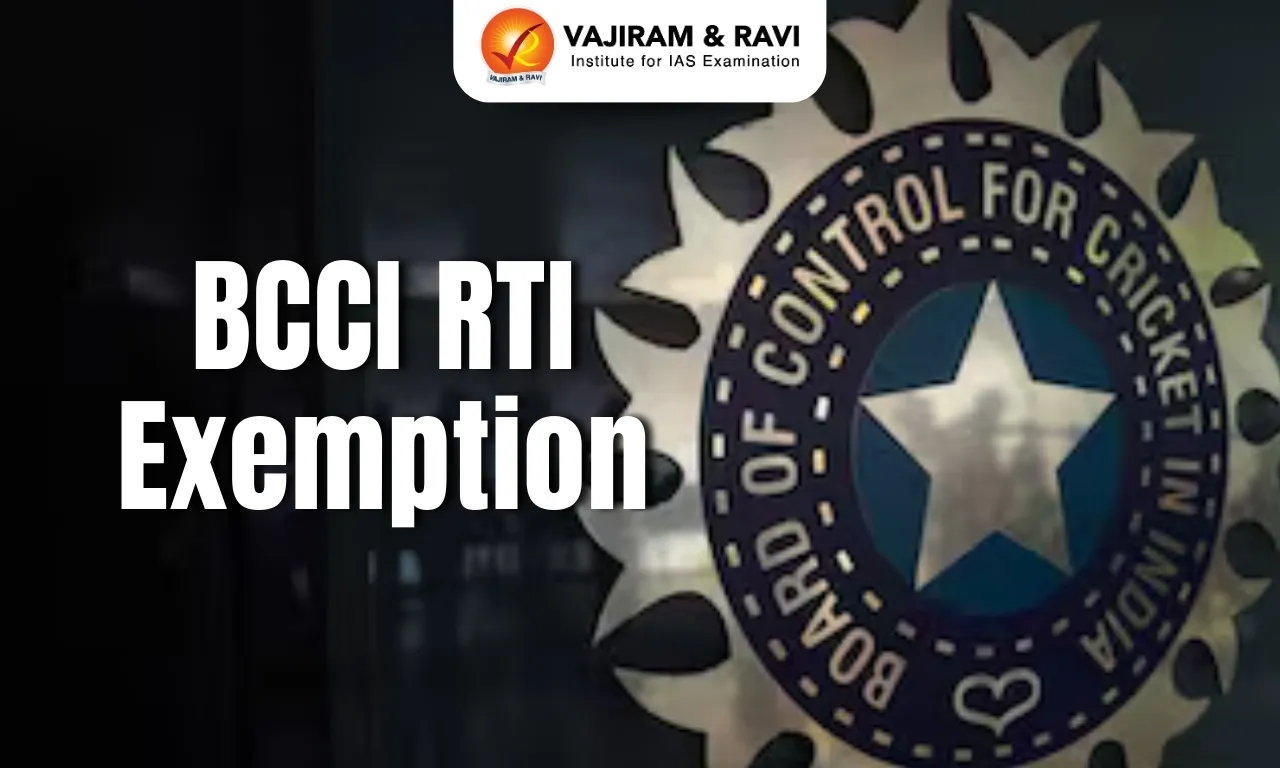What’s in Today’s Article?
- Chandrayaan-3 Landing Site Study Latest News
- Regional Geography of the Chandrayaan-3 Landing Site
- ISRO Scientists Uncover Age and Evolution of Chandrayaan-3 Landing Site
- Significance of the Study: Understanding the Moon’s Violent History
- Chandrayaan-3 Landing Site Study FAQs
Chandrayaan-3 Landing Site Study Latest News
- A study by scientists of ISRO has estimated the age of the Chandrayaan-3 landing site on the Moon to be 3.7 billion years.
- This period aligns with the time when primitive microbial life first appeared on Earth.
Regional Geography of the Chandrayaan-3 Landing Site
- In August 2023, India became the first country to achieve a soft landing on the Moon’s south pole.
- The landing site is now known as Shiv Shakti Point. This Point is enclosed by multiple large craters:
- Manzinus Crater (96 km diameter, ~3.9 billion years old) to the north
- Boguslawsky Crater (95 km diameter, ~4 billion years old) to the southeast
- Schomberger Crater (86 km diameter, ~3.7 billion years old) to the south
- Manzinus and Boguslawsky have flat floors and subdued walls, while Schomberger stands out due to its steep crater walls, central peak, raised rim, and well-preserved ejecta blanket.
ISRO Scientists Uncover Age and Evolution of Chandrayaan-3 Landing Site
- The landing site, now known as Shiv Shakti Point, has been under detailed study by ISRO’s Physical Research Laboratory (PRL) scientists using data from the Pragyan rover and Vikram lander.
- This mapping effort provides vital geological context for lunar exploration and deepens our knowledge of the Moon’s evolution and impact history.
- The findings have been published in the journal Advances in Space Research.
Study technique – Advanced Imaging and Terrain Analysis
- PRL scientists used high-end imaging techniques, including the Lunar Reconnaissance Orbiter’s wide-angle and terrain cameras, to analyze craters and rock distributions near the landing site.
- The Pragyan rover identified multiple rock fragments (over 1 cm in size) and secondary crater chains, helping researchers trace the origins of lunar materials in the area.
Identifying the Source of Lunar Rocks
- The PRL team analyzed rock distributions around the landing area and the region navigated by Pragyan rover. They found that:
- A higher rock concentration exists near a fresh crater (14 km south of the landing site), identified by continuous ejecta and a sharp rim.
- This fresh crater material showed less space weathering compared to its surroundings.
Key Highlights of the Study
- Estimating the Age of the Region
- By studying 25 craters (500-1,150 meters in diameter) in the low-relief smooth plains, scientists estimated the site’s age to be 3.7 billion years (Ga).
- Lunar Surface Evolution
- The region has undergone continuous micro-meteorite bombardments and extreme thermal fluctuations, leading to the gradual breakdown of exposed rocks into lunar regolith over millions of years.
- Formation of the Local Terrain
- Based on morphological studies, scientists concluded that the landing site’s terrain primarily consists of ejecta from two secondary craters—Manzinus and Boguslawsky—shaping the region over time.
Significance of the Study: Understanding the Moon’s Violent History
- Unlike Earth, the Moon lacks an atmosphere, making it vulnerable to constant asteroid impacts.
- Just counting the impact craters on the Moon helps determine the age of the landscape.
- Chandrayaan 3 landed in a heavily cratered region. The geological map allows scientists with the context necessary to interpret the data captured by the mission.
- It improves the scientific understanding of the geological history of the highlands around the south pole of the Moon.
Chandrayaan-3 Landing Site Study FAQs
Q1. When Was Chandrayaan-3 Landed?
Ans. Chandrayaan-3 successfully landed on the Moon’s south pole on August 23, 2023, making India the first to achieve this feat.
Q2. What Is the Main Aim of Chandrayaan-3?
Ans. The mission aimed to demonstrate a soft landing, deploy a rover for surface analysis, and study lunar geology and mineral composition.
Q3. Where Did Chandrayaan-3 Land?
Ans. Chandrayaan-3 landed in the Moon’s south polar region at Shiv Shakti Point, an area of scientific and exploratory significance.
Q4. What Is the Name of the Landing Point of Chandrayaan 1 and 2?
Ans. Landing point of Chandrayaan-1 is known as Jawahar Point while that of Chandrayaan-2 is called Tiranga Point.
Q5. What do craters on the Moon mean?
Ans. Moon craters are impact sites formed by asteroid collisions, revealing the Moon’s geological history, surface age, and lack of atmospheric protection.
Last updated on August, 2025
→ UPSC Mains Admit Card 2025 will be released soon at www.upsc.gov.in.
→ UPSC Mains 2025 will be conducted on 22nd August 2025.
→ UPSC Notification 2025 was released on 22nd January 2025.
→ UPSC Calendar 2026 is released on 15th May, 2025.
→ UPSC Prelims Question Paper 2025 and Unofficial Prelims Answer Key 2025 are available now.
→ UPSC Prelims Result 2025 is out now for the CSE held on 25 May 2025.
→ The UPSC Vacancy 2025 were released 1129, out of which 979 were for UPSC CSE and remaining 150 are for UPSC IFoS.
→ UPSC Prelims 2026 will be conducted on 24th May, 2026 & UPSC Mains 2026 will be conducted on 21st August 2026.
→ The UPSC Selection Process is of 3 stages-Prelims, Mains and Interview.
→ UPSC Result 2024 is released with latest UPSC Marksheet 2024. Check Now!
→ UPSC Toppers List 2024 is released now. Shakti Dubey is UPSC AIR 1 2024 Topper.
→ Also check Best IAS Coaching in Delhi















